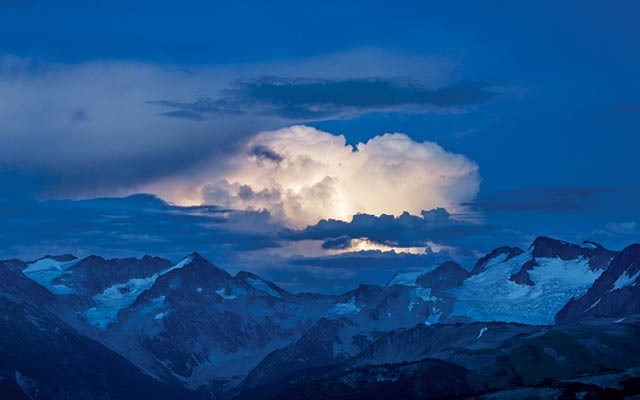Growing up in the Lower Mainland, Doug MacFarlane doesn't remember seeing as many thunderstorms as he sees these days.
"I haven't seen it as much as I have in the last three, four, five years," MacFarlane said.
"It's definitely been on the increase."
Or maybe, now that a big part of his job involves monitoring and tracking storm patterns, he's just noticing them more.
"It's something we're unfortunately getting better at responding to," he said.
As mountain manager with Whistler Blackcomb (WB), MacFarlane is instrumental in making sure the entire company responds swiftly to incoming storms.
WB has a company-wide protocol in place for when storms are approaching.
And when winter melts away to spring or summer gives way to fall and storm season begins in earnest, vigilance is key.
The first step is obvious: being constantly aware of the day's forecast.
"If there's potential lightning in the area... then we would basically, in the morning, assign somebody to pay attention to the lightning monitor so we could go about our business," MacFarlane said.
To track thunder and lightning in the area, WB subscribes to the same system used by Environment Canada — a Finnish system known as Vaisala.
"We take their imagery and their telemetry that they have throughout the province... and we put that on our own internal homepage," MacFarlane said.
"On there, everybody can access it."
The internal webpage also contains lightning procedures and guidelines accessible to everyone in the company.
The Vaisala system also allows for mass texts and emails to be sent to a distribution list of people who are critical to the response plan should a storm be approaching.
Along with MacFarlane, the list includes patrol managers, lift managers, maintenance staff and food and beverage workers.
"All the people within the company that are running their businesses will get this when the lightning moves in," MacFarlane said.
"So they'll get a text or an email from this same software system when it moves within 100 km."
The key factor in what happens next lies in which direction the storm is trending.
If the storm moves within 100 km and isn't coming closer, operations likely won't be affected.
If it gets within 60 km, however, it's time for action.
"If we're earlier in the year we'll be maybe skiing up on Horstman and Showcase T-bar for the summer glacier operation," MacFarlane said.
"We want to get all those kids off of there, and I need a lot of time to get them off the mountain."
The early response is necessary to ensure everyone finds a safe haven like the Rendezvous or Roundhouse restaurants.
"In some cases we'll try to get everybody off the mountain before the storm rolls in," MacFarlane said.
"It really depends on the intensity and the level of response and what we feel the storm is going to do."
While the higher-elevation ski lifts will be closed first, every lift on the mountain will be closed if a storm is getting too close for comfort.
The main motivation is safety — the last place you want to be in a thunderstorm is riding a giant lightning rod — but there's also a more economical reason.
"It can also damage your electronics," MacFarlane said.
"We need to unplug the lifts, ground them out, and make sure that if it blows the electronics in the lift, the ability to turn it back on after the storm goes by is not compromised."
When everyone is off the mountain and everything is shut down, it's just a matter of waiting out the storm.
"We'll call the operation for the day potentially, or we'll just resume operations once the thing passes," MacFarlane said.
"So a great deal of work goes into it, and into watching and making sure that we don't get caught with a storm here by surprise."




